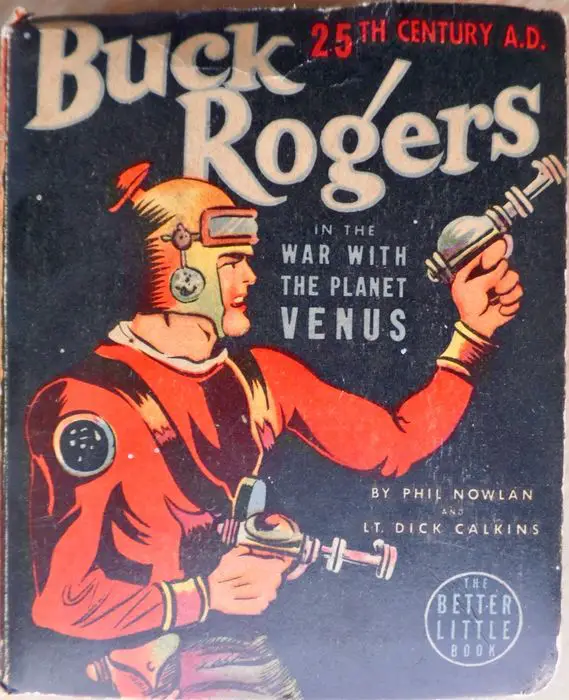Buck Rogers is a rather peculiar sci-fi property, being almost a hundred years old. While everyone has heard of it at least once in their lifetime, actually knowing something from the series? That’s another pair of rocket jockeys for sure. This is also because the character went through several reinventions, after debuting in a comic strip series in 1928. At first, William Rogers is a mine worker who falls prey to a job accident, ending up trapped in suspended animation. He is subsequently reawakened in 2412 and comes across Wilma Deering, saving her from an attack by a ferocious beast.
In 1933, the comic strip author and its illustrator, Philip Francis Nowlan and Dick Calkins respectively, retconned the character – by then already called “Buck” – making him a top American pilot, put into suspended animation to save his life. The strip’s popularity peaked right after, going on to enjoy a long-lived success, being put out of print only in the late sixties. Then, thanks to the popularity of Star Wars, in 1979 Buck Rogers came back to life with a tv series and a movie. Still, fame was short-lived, by the early Eighties the franchise was pronounced dead on arrival, and further attempts at reviving seemed to go nowhere.
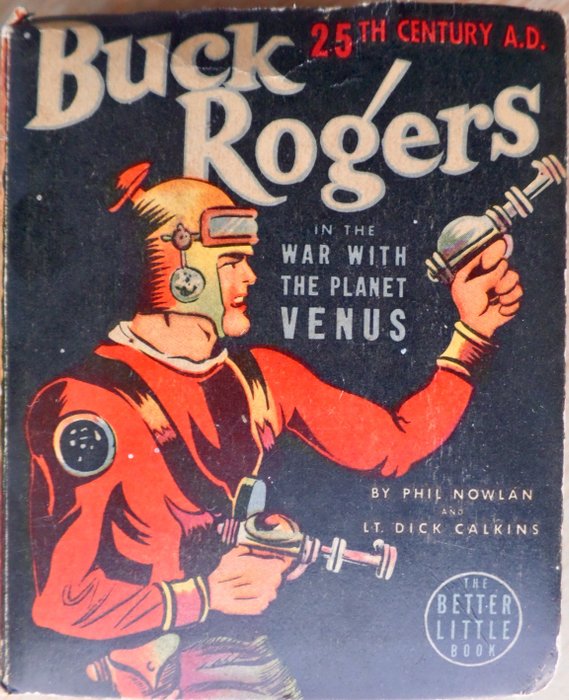
BUCK ROGERS AND THE THINLY VEILED PLOT
In the late 80s TSR designed a tabletop RPG, Buck Rogers in the XXV century, which led to SSI – owner of the Advanced Dungeons & Dragons license – developing two games based on it: Countdown to Doomsday and Matrix Cubed.
TSR developed a new story: in the 25th century, RAM (Russian american mercantile corporation) has long enjoyed a dominant economical position as the only superpower in the universe. After consuming all of Earth’s natural resources and occupying Mars, nobody seems inclined to stand in their way, except for the New Earth Organization (NEO). The player must put a stop to RAM’s intentions to sterilize the Earth for their nefarious purposes, with the use of the Doomsday Laser made to eradicate all life on our home planet.

The main conflict between the two superpowers, RAM and NEO, is a solid background for both games. In the first, Countdown to Doomsday, the members of the player’s team begin their story as cadets for NEO: while they are being walked to their first mission, the Earth base gets attacked by RAM ships. In the course of the game, the player will get to meet both the main characters, Buck Rogers and Wilma Deering, but strangely enough, they do not really serve a grand purpose. Truth be told, Rogers will come to our rescue during one mission and will serve as our commander for most of the game, but he does not do much to help nor to guide us.
GOLD BOX AND TURN-BASED COMBAT
SSI did not reinvent the wheel when it came to handling the license, with both titles using the Gold Box Engine, in a similar way to Champions of Krynn and Secret of the Silver Blades. Moving around is done in the first person, with combat taking place on an isometric perspective. Still, the one major difference between Countdown to Doomsday and the average SSI title: it is sci-fi, ergo no spell casting.
Both games begin like most RPGs of the time: create characters from scratch, add them to a team, begin adventuring. The player is allowed to choose between 5 different races – with different physical attributes – sex (which makes a difference a few times) and combat icons. Countdown to Doomsday was among the very few SSI RPGs to receive a console port, for the Sega Mega Drive/Genesis, with quite a few differences which we’ll see later.
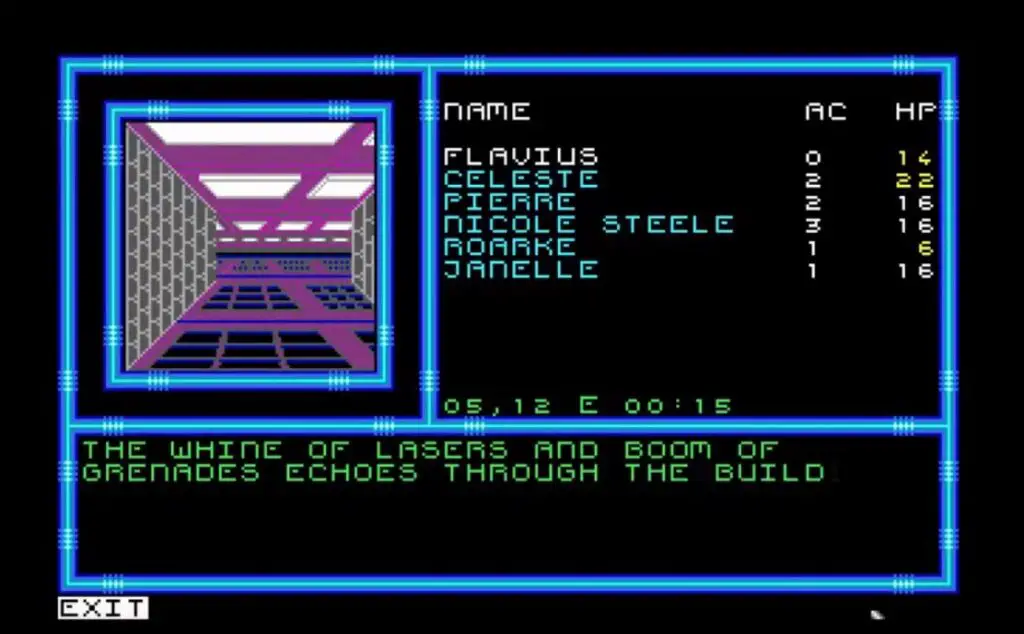
Deciding which characteristics to add to each member will take time, especially in the home computer versions. For example, as soon as the first mission on Earth is finished, the team is sent to space to investigate a few news on RAM’s wrongdoings. Pretty soon, fighting in zero gravity becomes common, which means that if a character isn’t trained in the related ability, their movement shall be heavily affected. As to be expected, certain weapons work better on some enemies rather than others and, since fighting is always against a party of enemies, rocket launchers and grenades will end up being the most effective. Switching weapons during combat soon becomes a necessity, unfortunately, the keyboard interface makes it not very convenient to do so. It is possible to use the mouse but the interface was not designed with mouse control in mind.
HAVING A BREAKDOWN
Weapons generally have limited ammo and tend to break after a while (again, only in the home computer version), hence the usefulness of having someone trained in repairing them, which is, at least, slightly more convenient than lugging around six different kinds of pistols and rifles. Clearly, every team needs a medic who is trained in first-aid and healing, especially since no health is ever restored while out on a mission, unless one finds an auto-doc. Also, a rocket jockey will definitely come in handy (for fighting in space), and, well, a rogue and an engineer might also help, even if they’re not exactly mandatory.
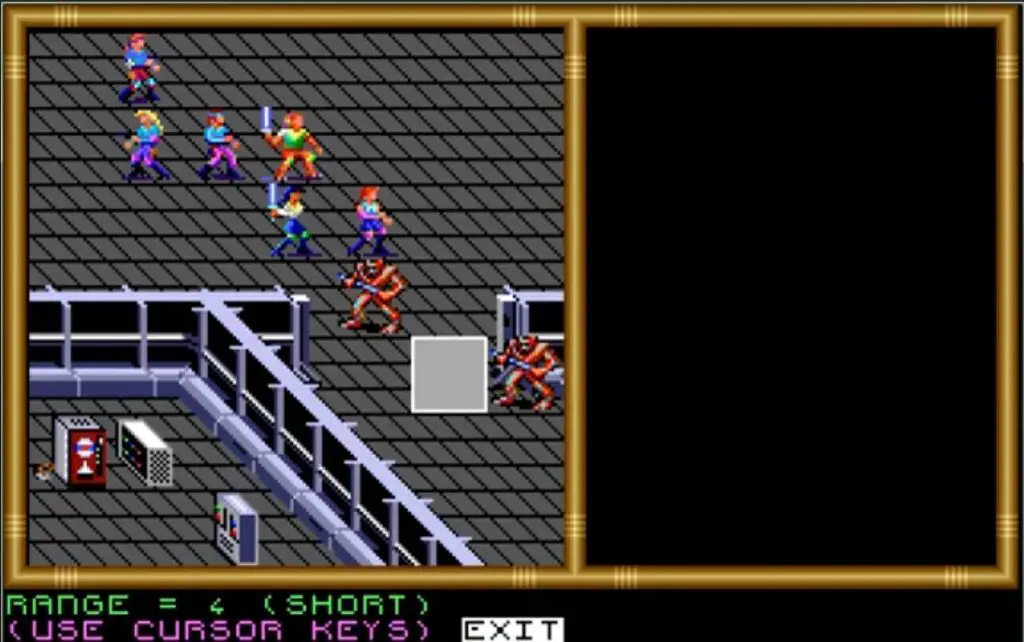
Combat happens randomly and as was the case at the time, there is no “grace period”. Thus it may happen that, right after a difficult boss fight, the team might encounter random fights one after another. This might get troublesome if one has limited weapons or has not fully healed the team. In order to slightly reduce stress from repeated random encounters, the player can lower the difficulty and choose “quick combat”, leaving it to the AI to win the fight. This usually works fine, since the computer seems hell-bent on ending the fight as soon as possible, as long as one doesn’t expect to save ammo or preserve health. While the AI is keen on saving the player’s precious time, I would not recommend using it for scripted non-random combats, which are usually harder and require more finesse than just “all-out assault”.
HOW ABOUT TURN-BASED COMBAT… BUT IN SPACE?
So far, we have not really seen anything new to any SSI developed Goldbox RPGs: it was all standard fare. Still, as I have mentioned, there is one new thing that the software house introduced for the Buck Rogers saga specifically: space combat. While traveling around space in our previously owned RAM ship, The Maelstrom Rider, it is possible to encounter random fights, same as on the ground. But in space, there are options: it is usually possible to hail the cruise, attack directly or try to flee. Interestingly enough, space combat works the same for all versions of the game, but – interestingly – in ground combat, it is possible to flee only on the Sega Mega Drive port.
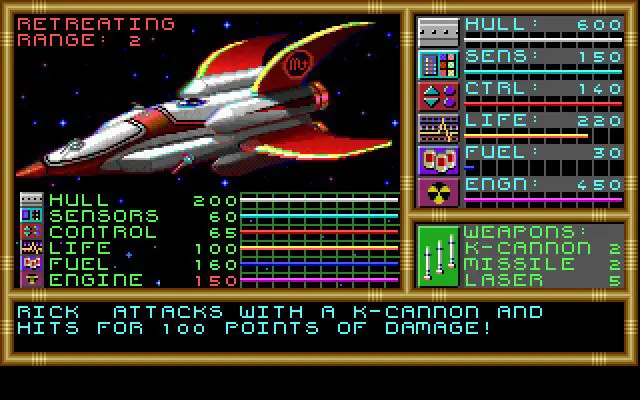
The team will encounter RAM and pirate ships, which can be of three different sizes and, with appropriate maneuvering, can also be boarded (they might also reciprocate). The characters’ abilities will also play a direct role, since it is important to keep up the repairs on our ship, along with firing weapons and maneuvering the craft around, something the rocket jockeys do pretty well. Dogfighting in space is slightly more engaging than the average turn-based combat, but – unfortunately – it feels like an afterthought. For the most part, space combat can be skipped altogether, since it barely factors in the plot: there is only one single fight required to progress in both games.
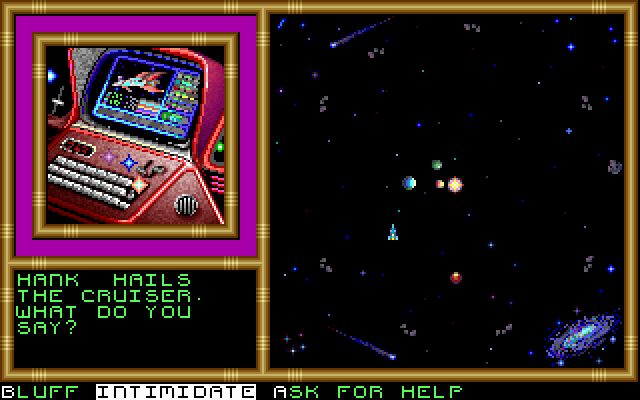
Naturally, fighting RAM ships is not all wasted time, since the team will be rewarded for hunting down ships but, with space combat usually being pretty long winded, the rewards are not generally worth the time. There are some powerful weapons to be found on some of the bigger vessels, should one manage to board and survive the difficult fights inside, but that is basically the most space combat will award the player.
Unfortunately the team’s own spaceship cannot be upgraded nor changed: it will always have three weapons at its disposal and the same amount of hull (health) points. It is a pity, since overall, space combat is an interesting mix between the usual turn-based fighting and a more exciting dogfighting simulator, designed to make use of many characters’ abilities. It sure does lend itself to some pulse-quickening fights to the death (or explosion, in this case).
AN HOME COMPUTER RPG ON A SEGA CONSOLE? FOR REAL!
As mentioned, Countdown to Doomsday was among a few home computer titles that Electronic Arts decided to publish on the Sega 16bit console, back when they were still experimenting with their library (in 1992 they would also publish the fantastic Starflight and my beloved Naughty Dog RPG Rings of Power). The first difference is clear: now the entire game is played on a third-person view.
This makes things quite more pleasant and varied, along with being easier to find our way around and recognize points of interest. Also, the game is now fully soundtracked, as opposed to the few squeaks and burps of the home computer versions.
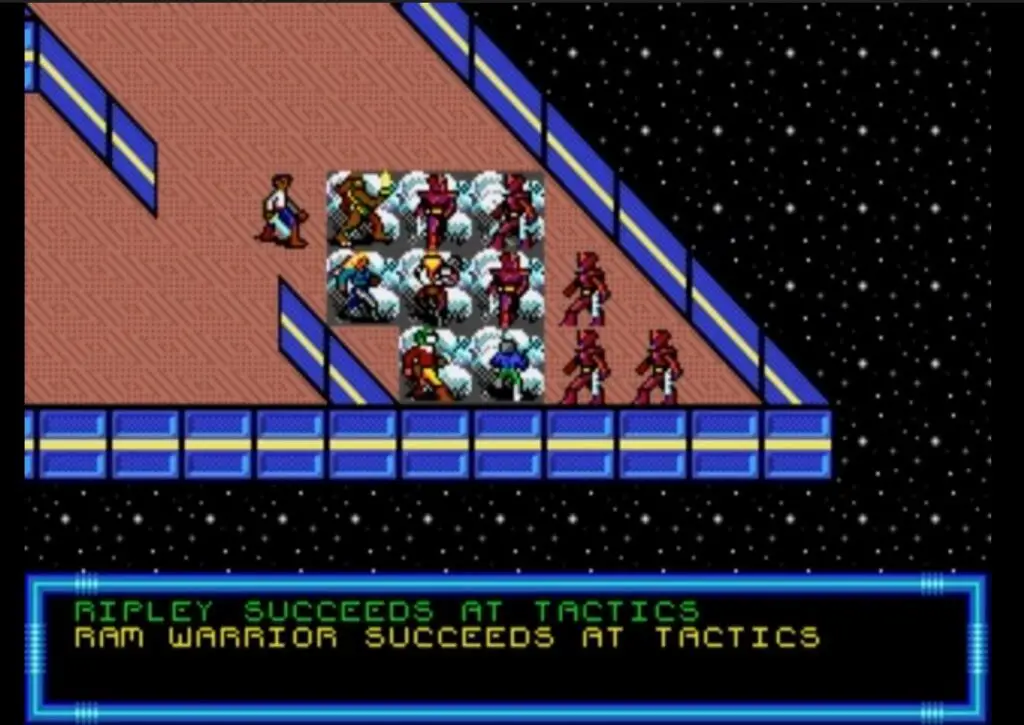
Some of the plot threads are slightly simplified, but most of what happens still seems to have made the jump intact. The characters’ race and professions were given a slight cut and their abilites reduced to the bare essential, which does make character creation much more of a quick process. It also makes it quite clear from the start which abilities one will need the most.
While hardcore RPG fans of classic cRPGs might frown at some of the changes, which do make the gameplay simpler (and the fights as well, since it is almost always possible to flee), I think it is fair to say that SSI almost put more work into the Sega version than the original version!
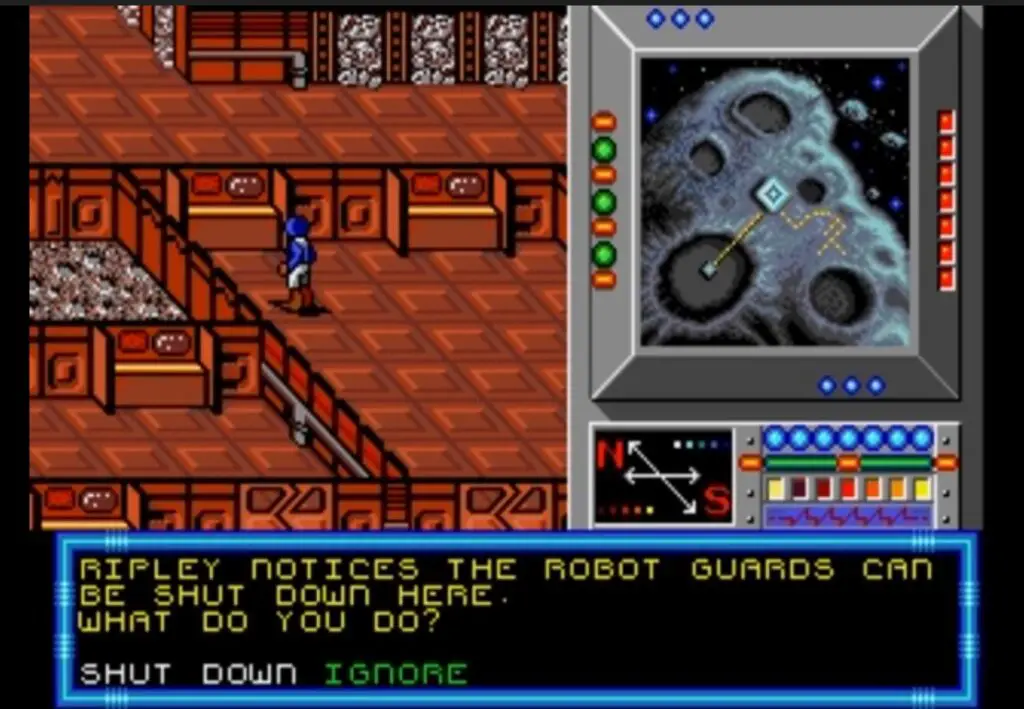
ENTER THE MATRIX (CUBED)
While not really an instant sequel, Matrix Cubed definitely feels like one: released in 1992 as a PC-exclusive. An Amiga version was in the works and apparently finished but there was one critical bug which took some time to figure out and, in the end, SSI apparently lost interest in releasing that version.
Very few changes between the two titles, with Cubed also being programmed with the Goldbox interface, thus having the same combat (both ground and space) design and character creation. even though this time SSI took care to extensively make use of the characters’ specific abilities, which makes sense, except there will be many instances where even a maxed-out ability will cause the character to fail a check, with no way to try again, except loading up a previously saved game.
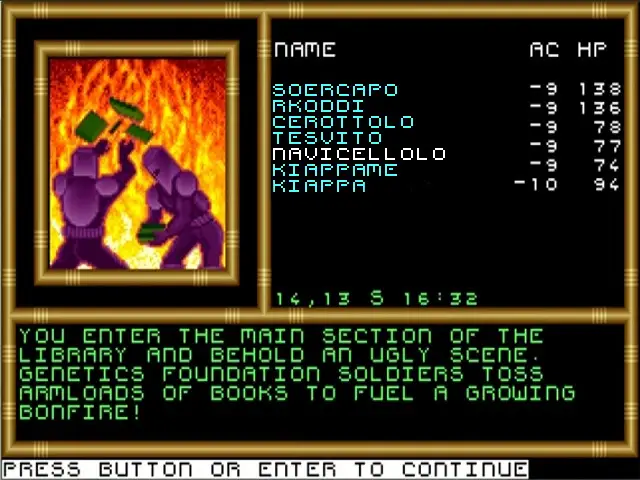
After the opening, the team gets attacked right away because of the events of the previous game with the Doomsday Laser, so the story picks up from where we left off. Buck Rogers will send us to investigate rumors about the Matrix Cubed: a technology to re-fertilize Earth and restore life on the planet.
This time, though, RAM will not be the biggest threat, instead there is P.U.R.G.E.: a Terran organization against all otherworldly non-human creatures. Their leader is Sid Refuge (yes) and he will be the main arch-nemesis of the game, which we will fight several times before the end.
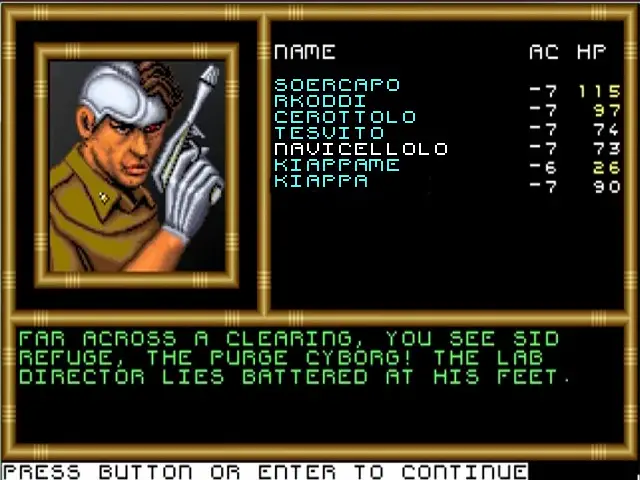
THE LOSANGELORG TIMES
Matrix Cubed is a longer adventure than the first one, with several planets to explore, featuring longer levels and a higher number of battles. While the places of interests are mostly the same from the previous title, there are a couple of interesting new ones, Losangelorg is now explorable along with the planet Jove. The most interesting place is, undoubtedly, the living ship which the team will need to board and heal up to receive help in the conclusive battles. Unfortunately the levels inside the ship aren’t really worth mentioning, they are mostly made up of busywork and repetitive quests.
For some reason, SSI did not want to imitate the slightly more modern look of the 16bit Sega version, instead going again for the true and tested first person exploration with isometric combat. While graphically, Matrix Cubed looks slightly more varied and colorful, it still feels like SSI missed a chance by not developing the sequel to be a fully-isometric RPG. Music is still absent, except for short jingles that punctuate some exciting moments, most of the sound is just the PC speaker squawking while the team walks around.
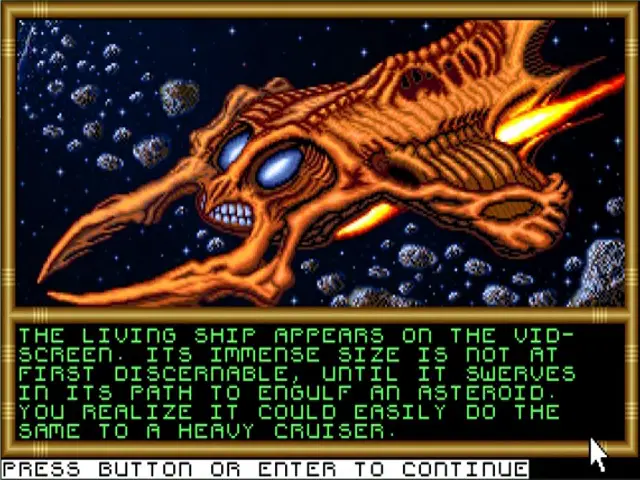
There are some new enemy types, some of them twice bigger than previously, like the stage 5 gennies (which look like the Red Devils from Ghosts and Goblins) and the fearsome Venusian dinosaurs. Ground combat is not only more frequent but feels, overall, more difficult, which might make sense in keeping with the “sequel for fans of the original” spirit, but it gets old pretty fast. There are a couple of fights which feel almost unwinnable. In the end, the two positive things of Matrix Cubed, a quite varied story with many new locations to explore and the great looking pixel art, are unfortunately not enough to be recommended, even fans of the original will better arm with patience.
ARE THEY STILL WORTHWHILE?
Somehow, the two Buck Rogers RPG games feel like they definitely belong in the sci-fi series, one which never seemed to have a clear direction. From the 30s comic style of the original, which actually influenced Flash Gordon, down to the Star Trek-style of the movie from 1978; it almost felt like our dear William was more than willing to sell himself just to get with the times. And the two RPG by SSI definitely feel like they get on with the early 90s, feeling stuck in a moment where the genre was not really welcoming for newcomers and players would have to arm themselves with log books and guide books to get through.
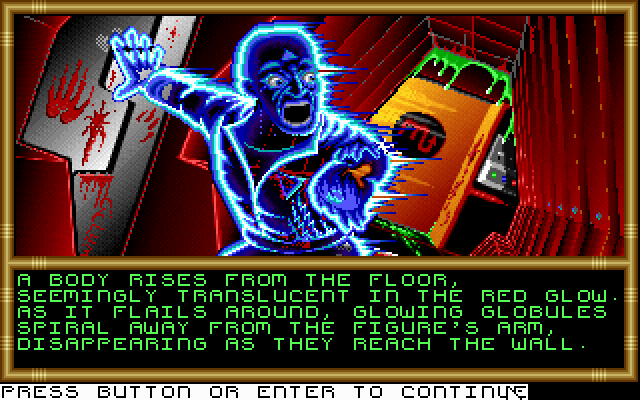
It is worth mentioning also how the narratives touch upon many adult topics, very much different from what Japanese RPGs of the same time were doing. Particularly memorable is the second scene in the original Countdown when the team boards a seemingly abandoned RAM ship which turns out to be infested with alien forms, it feels like a horror vignette, very much Alien-inspired in all of the right ways. Indeed, if one is ready to put down sometimes, both games I think will reward with solid turn-based combat systems and still very intriguing narratives. Are you ready for launch?


